Orchids are some of the most elegant, exotic, and mesmerizing houseplants you can grow. Known for their dazzling, long-lasting blooms and graceful, arching stems, orchids effortlessly add a touch of sophistication to any home or office. But despite their refined appearance, orchids are not as difficult to care for as their reputation suggests — with a little knowledge and consistency, anyone can nurture these tropical beauties to bloom again and again.
If you’ve ever struggled to keep an orchid alive, or you’re hoping to encourage more frequent blooms, this comprehensive guide will teach you exactly how to take care of orchids for stunning, healthy flowers.
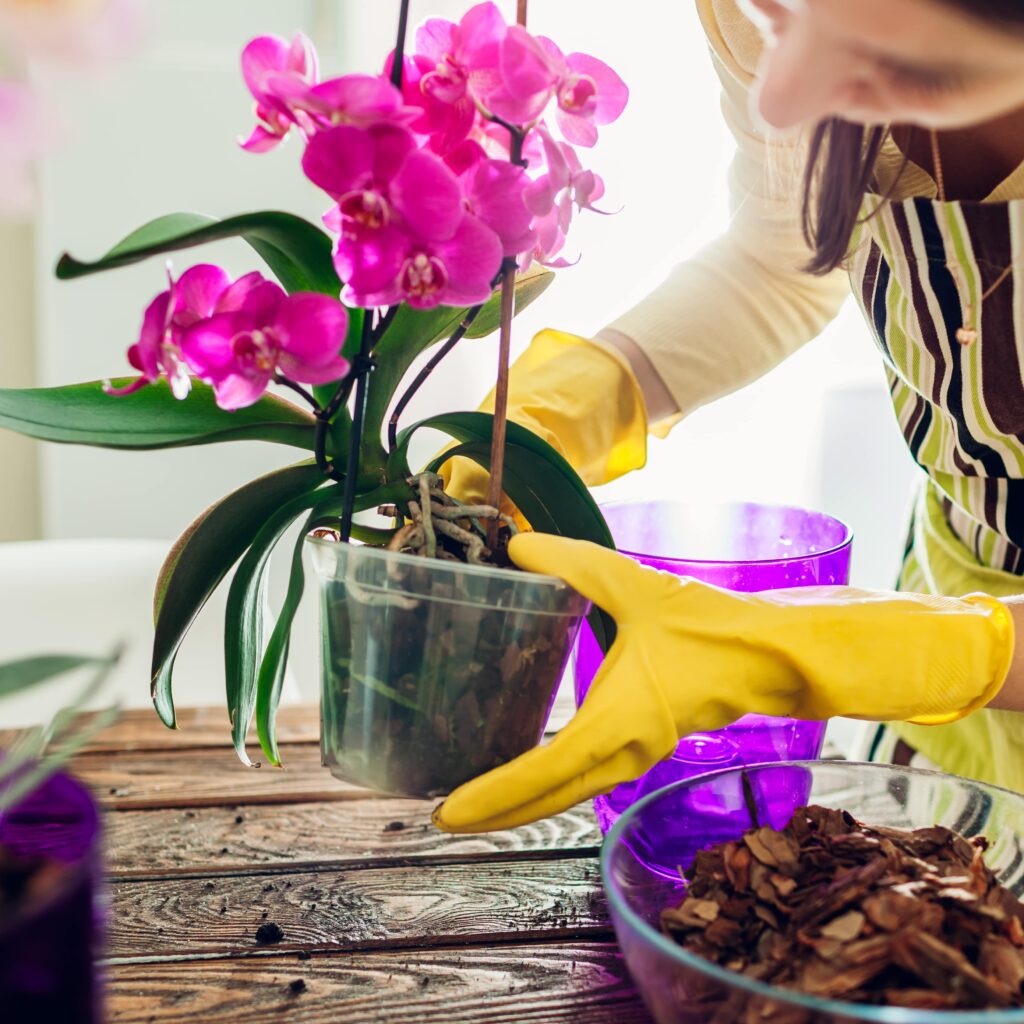
Understanding Orchids: A Quick Introduction
The orchid family (Orchidaceae) is one of the largest and most diverse plant families in the world, with over 25,000 species and 100,000 hybrids. Native to nearly every continent, orchids have adapted to various environments — from tropical rainforests to alpine meadows.
Some of the most popular orchids for home growing include:
- Phalaenopsis (Moth Orchid): Easiest for beginners, with long-lasting flowers.
- Cattleya: Known for large, fragrant blooms.
- Dendrobium: Produces clusters of small, delicate flowers.
- Oncidium: Features sprays of tiny, bright blossoms.
- Vanda: Valued for vibrant, showy flowers and aerial roots.
How to Care for Orchids: The Essentials
Despite their glamorous look, most orchids are surprisingly hardy if you meet their basic care needs. Let’s dive into everything you need to know.
1. Provide the Right Light
Orchids love bright, indirect light. Getting this right is one of the keys to encouraging those stunning blooms.
Ideal conditions:
- East or south-facing windows are perfect.
- Avoid direct midday sun, which can scorch the leaves.
- If natural light is insufficient, supplement with grow lights.
Pro Tip: Check the leaf color:
- Healthy orchids typically have light to medium green leaves.
- Dark green leaves may indicate too little light.
- Yellowish leaves suggest too much sun.
2. Water Properly (Not Too Much!)
Overwatering is the number one reason orchids fail to thrive. Unlike typical houseplants, most orchids are epiphytes, meaning they grow attached to trees in the wild and absorb moisture through their aerial roots.
Watering guide:
- Water once a week during the growing season (spring and summer).
- Reduce to every 10–14 days in winter.
- Always allow the potting medium to dry out slightly between waterings.
How to water:
- Use room-temperature, filtered or rainwater.
- Water the roots thoroughly, then let the pot drain completely.
- Never let the orchid sit in standing water — it promotes root rot.
Tip: Place orchids in the sink and run water through them for 15–30 seconds before draining.
3. Provide Good Air Circulation
Orchids love humidity, but they also need fresh, circulating air to avoid fungal and bacterial problems.
- Place a small fan nearby to encourage airflow.
- Avoid placing orchids in stuffy or overly dry rooms.
- Maintain humidity around 40–70% for most varieties.
Bonus Tip: In dry climates or heated homes, use a humidity tray (a shallow dish filled with pebbles and water) beneath the orchid pot to gently raise moisture levels.
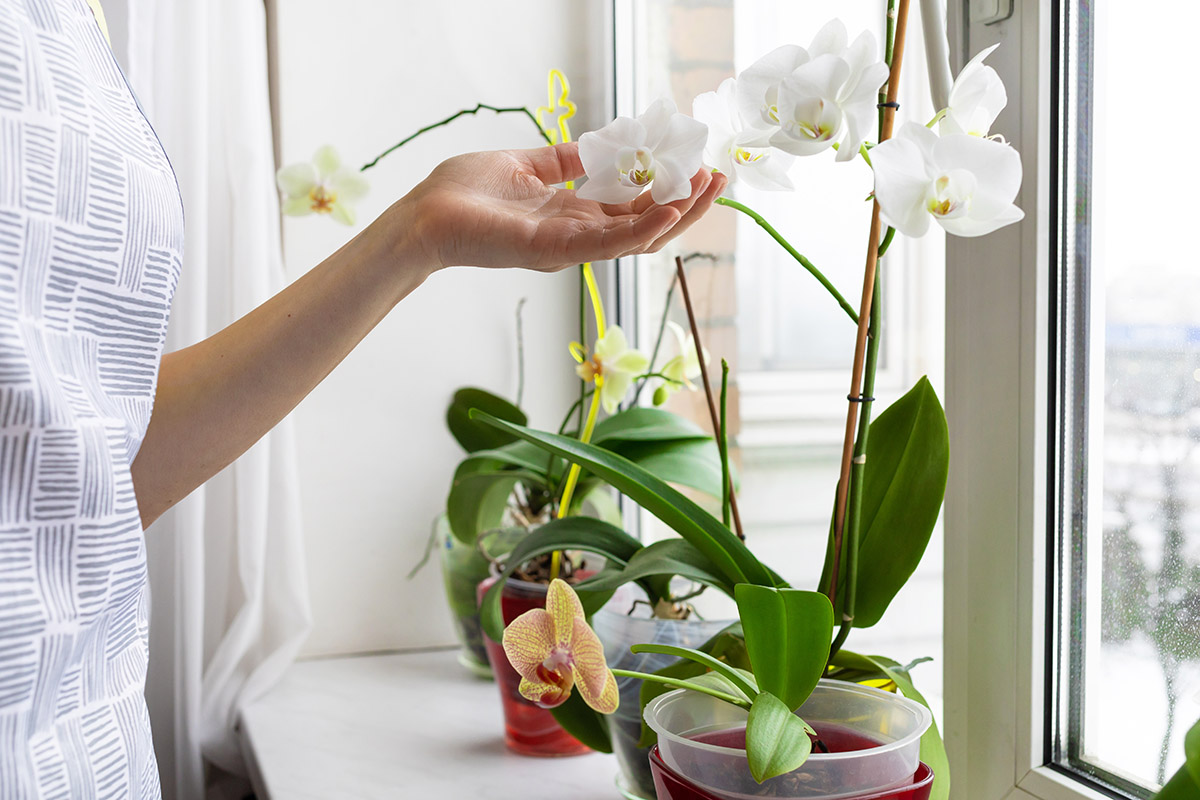
4. Use the Right Potting Medium
Orchids don’t grow in soil. Instead, they thrive in a loose, fast-draining medium that mimics their natural environment.
Recommended potting materials:
- Bark chips
- Sphagnum moss
- Coconut husk
- Perlite
- Charcoal
Repot every 1–2 years, or when the medium breaks down and no longer drains well.
5. Feed with Orchid Fertilizer
Orchids are light feeders, but regular fertilizing encourages healthy foliage and flower production.
Fertilizing schedule:
- Use a balanced orchid fertilizer (20-20-20) or one slightly higher in nitrogen.
- Feed once every 2 weeks during spring and summer.
- Reduce to once a month during fall and winter.
- Always fertilize after watering to avoid root burn.
Pro Tip: The “weekly, weakly” method — applying a diluted fertilizer weekly — is a popular approach among experienced growers.
6. Encourage Reblooming
Getting an orchid to bloom again is easier than you might think, but it does require the right conditions and a little patience.
Steps to rebloom:
- After the flowers fade, cut the flower spike (stem) just above the second or third node (the small bumps along the stem).
- Move the orchid to a slightly cooler spot at night (55–65°F / 13–18°C) for a few weeks.
- Maintain consistent care with light, water, and fertilizer.
- New buds should appear within a few months.
Note: Some orchids, like Phalaenopsis, can rebloom from the same spike, while others, like Cattleyas, only flower on new growth.
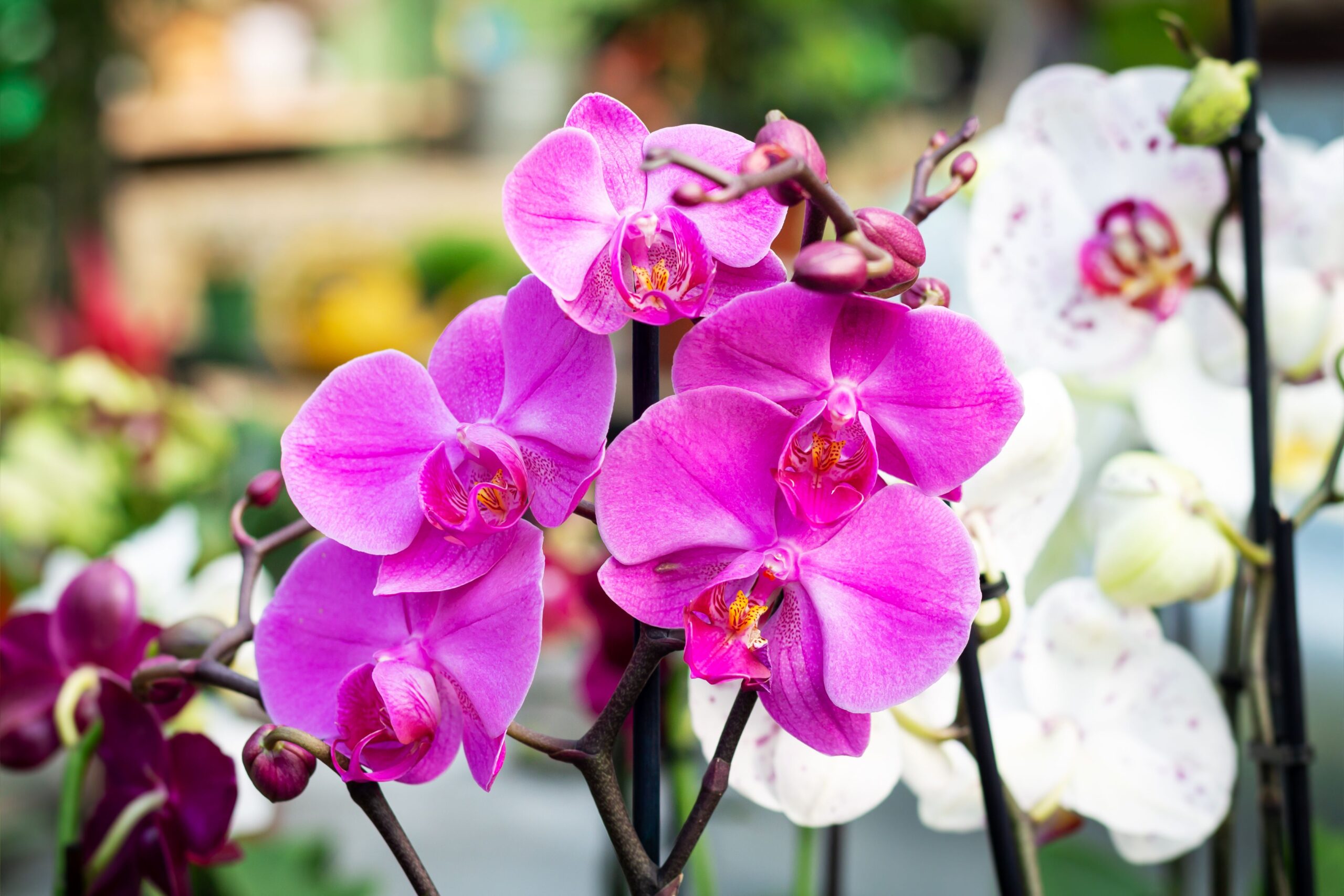
Common Orchid Problems and How to Fix Them
Even with good care, occasional issues may pop up. Here’s how to troubleshoot:
| Problem | Solution |
|---|---|
| Yellow leaves | Reduce watering; move away from direct sun |
| Wilted, mushy roots | Remove affected roots; repot in fresh medium |
| No blooms | Increase light exposure; adjust night temperatures |
| Drooping flower spikes | Stake the spike or trim after flowers fade |
| Pest infestations (mealybugs, scale) | Use neem oil or insecticidal soap; isolate the plant |
Creative Ways to Display Orchids
Orchids are naturally beautiful, but how you display them can enhance their appeal even more.
Display ideas:
- In decorative clay or glass pots
- Hanging baskets with open slats
- Mounted on driftwood or cork bark
- In airy terrariums or orchidariums
- Grouped together in a bright window nook
Tip: Always ensure your chosen container has excellent drainage.
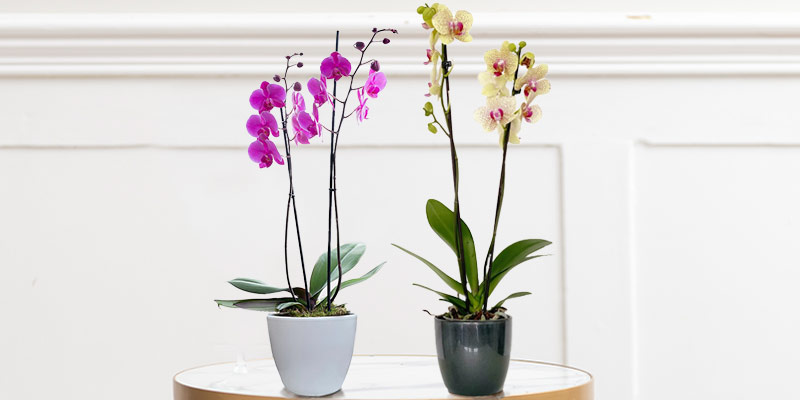
How Long Do Orchid Blooms Last?
One of the most rewarding things about orchids is how long their flowers last. Depending on the type, blooms can stay vibrant for 6 to 10 weeks — sometimes longer!
Phalaenopsis orchids, for example, are famous for their extended blooming periods, while Cattleyas might bloom for a few weeks but offer intense fragrance and color.
Final Thoughts
Orchids may have a reputation for being tricky, but in reality, they’re resilient, rewarding, and surprisingly forgiving once you understand their basic needs. By providing the right balance of light, moisture, air circulation, and nutrition, you’ll be rewarded with stunning, long-lasting blooms and lush, healthy foliage.
So whether you’re new to orchid care or refining your plant-parenting skills, follow this guide to transform your orchid collection into a vibrant, flowering display that brightens your home all year round.

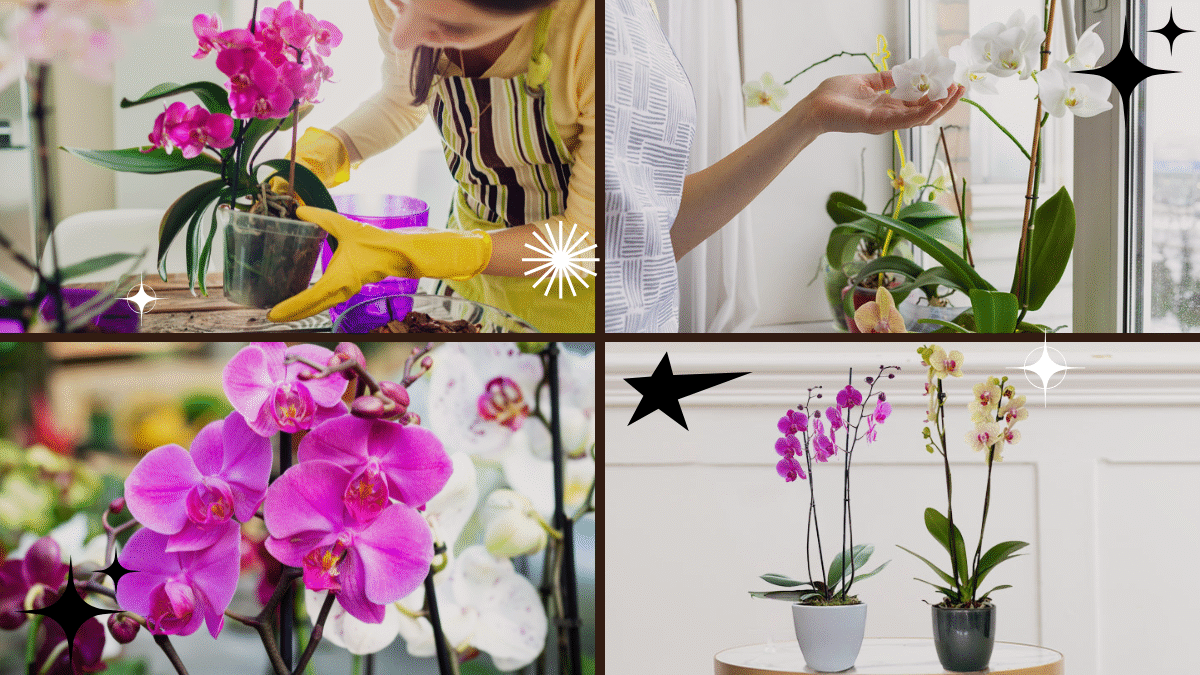



Leave A Comment